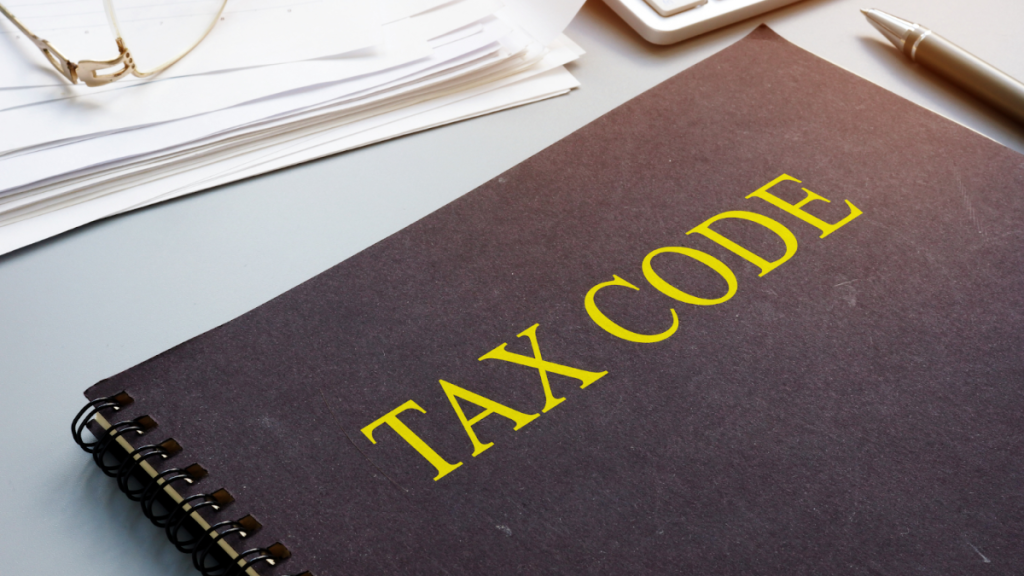Did you know a simple mistake on your tax return could cost you thousands in penalties? Fortunately, there are options available to provide you with relief—First-Time Penalty Abatement is one of the most effective programs to reduce or eliminate those penalties and get back on track. This program is a valuable relief option for taxpayers who typically comply with IRS regulations but face penalties due to a one-time issue. The IRS First-Time Penalty Abatement allows eligible individuals and businesses to reduce or eliminate penalties such as failure-to-file, failure-to-pay, or failure-to-deposit. By providing a clean compliance history and demonstrating reasonable cause, taxpayers can benefit from penalty abatement under this program, easing the financial burden caused by IRS penalties.
IRS First Time Penalty Abatement: Key Types and Relief Options
The IRS First Time Penalty Abatement (FTA) is especially valuable for taxpayers who typically comply with tax laws but face penalties due to a one-time oversight. Along with the FTA, there are other administrative waivers, including those introduced through IRS policy statements or legislative changes, providing further avenues for penalty relief. Below, we will explore the key types of First-Time Penalty Abatement which serves as a foundation for tax penalty relief.
Curious about how First-Time Penalty Abatement can provide tax relief? Click here to read about its benefits.
Failure-to-File Penalty
Failure to File Penalties are applied when individuals or businesses don’t submit their required tax returns on time.
Eligibility for Failure to file Penalty Relief
You may be eligible for this penalty relief if you can show reasonable cause i.e,. that you exercised ordinary care and were still unable to file your tax return or pay taxes on time. Some valid reasons for failure to file or failure to pay penalties may include:
Natural disasters, fires, or civil disturbances
Inability to obtain records
Death, serious illness, or unavoidable absence of the taxpayer or their immediate family
System issues that prevented timely electronic filing or payment
For more details, refer to Policy Statement 3-2.
Here’s a breakdown of how these penalties work:
For Individual Tax Returns
If you don’t file your personal tax return on time, IRC Section 6651(a)(1) will apply. This includes penalties for income tax returns and other required filings. The penalty grows based on how late the return is.
If you don’t file your tax return by the due date, the IRS imposes a penalty. This penalty is 5% of the tax owed for each month (or part of a month) the return is late, up to a maximum of 25%.
If the return is more than 60 days late, the penalty will be at least $435 or 100% of the unpaid tax, whichever is less.
You can avoid this penalty if you can prove the failure was due to reasonable cause and not due to willful neglect.
If the failure to file is due to fraud, the penalty is much higher: 15% per month, up to 75% of the unpaid tax.
For partnership Returns
Partnerships are required to file returns under IRC Section 6698(a)(1). If they don’t file on time, they will face penalties. This section covers partnership returns that are late or incomplete. If a partnership fails to file the required tax return or partnership adjustment tracking report on time, or if the return is incomplete, the partnership will be subject to a penalty. This penalty applies for each month the failure continues, up to a maximum of 12 months, unless the failure was due to a reasonable cause. The penalty is calculated based on the number of partners and applies until the required documents are properly filed.
For S Corporation Returns
S Corporations must file their returns as outlined in IRC Section 6699(a)(1). If an S corporation fails to file its required tax return on time or submits an incomplete return, the corporation will be subject to a penalty. This penalty applies for each month (or part of a month) the failure continues, up to a maximum of 12 months. The penalty continues to accrue unless the S corporation can demonstrate that the failure was due to a reasonable cause. This penalty is in addition to any other penalties related to willful failure to file or pay taxes under section 7203.
Frustrated by ongoing tax penalties? Our tax attorneys can help you reduce or remove penalties for individual, partnership, and S Corporation returns—Contact us today!
Failure-to-Pay Penalty
Failure to pay penalties apply when a taxpayer does not pay the tax owed by the due date. If the amount shown on the return is not paid on time, penalties can accumulate monthly. In addition, if tax is owed but not shown on the return and not paid by the date specified in an IRS notice or demand, further penalties may be imposed.
Eligibility for IRS Failure to Pay Penalty Relief
The eligibility criteria for Failure-to-Pay penalty relief are similar to those for Failure-to-File. Both require demonstrating a history of compliance and/or showing reasonable cause for the delay in payment or filing.
This penalty is a percentage of the unpaid taxes and will not exceed 25% of your total unpaid taxes. Here’s an overview of how the Failure to Pay penalty is determined based on the type of unpaid tax and the duration it remains outstanding.
Penalty for Not Paying Amount Shown on Your Return
If you fail to pay the amount shown on your tax return, the Failure to Pay penalty is calculated as follows:
The penalty is 0.5% of the unpaid taxes for each month or part of a month that the taxes remain unpaid. The penalty is capped at 25% of the total unpaid taxes.
If both a Failure to Pay and a Failure to File penalty apply for the same month, the Failure to File penalty will be reduced by the Failure to Pay penalty. For example, instead of a 5% Failure to File penalty, a 4.5% Failure to File penalty and a 0.5% Failure to Pay penalty would apply.
If you have an approved payment plan and filed your return on time, the Failure to Pay penalty is reduced to 0.25% per month during the approved payment plan.
If you fail to pay your taxes within 10 days of receiving an intent to levy notice from the IRS, the penalty increases to 1% per month or part of a month.
Penalty for Not Paying Tax You Didn’t Report
If the IRS determines you owe additional tax that you did not report on your return, the Failure to Pay penalty is calculated based on the following:
The IRS will send you a notice or letter outlining the additional tax owed, along with a due date, which is typically 21 days after the notice, or 10 business days if the amount exceeds $100,000.
If you fail to pay the additional tax by the due date, the penalty is 0.5% of the unpaid tax for each month or part of a month the tax remains unpaid, with a maximum of 25%.
If you have an approved payment plan and filed your return on time, the penalty is reduced to 0.25% per month during the payment plan.
As with the standard Failure to Pay penalty, if you don’t pay within 10 days of receiving an intent to levy notice, the penalty increases to 1% per month.
Learn How a Tax Attorney Can File a Strong Request for First Time Penalty Abatement. Call us at (888) 342-9436 to secure your first IRS abate
Failure-to-Deposit Penalty
The Failure to Deposit penalty applies when employment taxes are not deposited correctly by the employers. This can happen if the tax amount is incorrect, if the deposit was made after the prescribed deadline, or if the deposit wasn’t made in the required manner. Under IRC 6656, penalties may be imposed if any of these conditions are not met, leading to additional charges based on how late or incomplete the deposit is. Employer-paid taxes include federal income tax, Social Security and Medicare taxes and Federal Unemployment Tax. Employers must send employment tax deposits to the IRS on a monthly or semi-weekly schedule.
Eligibility for Failure-to-Deposit Penalty
The IRS may waive the penalty for first-time depositors of employment taxes if the failure was inadvertent and the return was filed on time.
The IRS may abate the penalty if the depositor mistakenly sent the payment to the wrong place but was otherwise compliant and had a reasonable cause for the error
Calculation of Penalty
The penalty is calculated based on the length of the delay:
2% if the failure is for not more than 5 days,
5% for 6-15 days,
10% for over 15 days.
If the deposit isn’t made within 10 days after the first delinquency notice or after a demand for immediate payment, the penalty increases to 15%.
Did you know Ryan’s case was a challenge, but J. David Tax Law didn’t give up. After three attempts, we secured a full waiver of $150,888 in penalties and interest.
How a Tax Attorney at J David Tax Law Can Help
We specialize in offering personalized legal support to help you secure the penalty relief you need. Our experienced tax attorneys work closely with you to understand IRS regulations, ensuring you meet the qualifications for First-Time Penalty Abatement. Here’s how we guide you through the process:
Review of IRS Requirements for Eligibility
Our tax attorneys will carefully assess your compliance history to determine whether you meet the IRS’s First-Time Penalty Abatement eligibility criteria. We’ll verify if you’ve had any penalties in the last three years or if any penalties were previously removed for valid reasons.
Ensure All Tax Returns Are Filed
We’ll confirm that all your required tax returns have been filed with the IRS. Missing or unfiled returns can disqualify you from FTA relief, so our tax relief attorneys work to ensure everything is up to date before proceeding.
Address Outstanding Taxes or Payment Plans
If you have unpaid taxes, we’ll help you settle those through payment or set up an IRS-approved payment plan. Having a payment plan in place is key to qualifying for First-Time Penalty Abatement, and our attorneys will ensure you’re on the right track.
Advocate for Penalty Relief
Once eligibility is confirmed, our tax attorneys will submit a strong FTA request on your behalf, ensuring all documentation and compliance are in order to maximize the chances of penalty relief.
Ongoing Support and Guidance
In case your FTA request is denied or additional issues arise, we’ll help you explore other relief options, including reasonable cause appeals or other IRS programs to reduce your financial burden.
Our tax specialists at J David Tax Law are committed to helping you secure the First-Time Penalty Abatement you deserve. Get a free consultation today and see how much you can save on penalties!
Your Tax Relief Questions, Answered















